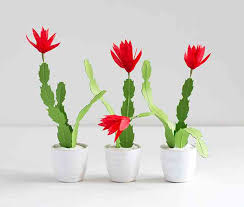Braised Pork with Shiitake Mushrooms: A Savory Delight of Chinese Cuisine

Pork, in its many forms, holds a special place in Chinese cuisine. Known for its rich, tender meat and versatility, it pairs wonderfully with a variety of ingredients, including vegetables, herbs, and fungi. One such dish that brings together the umami flavors of pork and the earthy, aromatic taste of mushrooms is Braised Pork with Shiitake Mushrooms. This dish is a popular choice in many households and restaurants, offering a comforting combination of flavors and textures.
In this article, we will explore the origins, preparation, and key ingredients of Braised Pork with Shiitake Mushrooms, a dish that has become a classic comfort food in many Asian kitchens. From understanding its cultural significance to mastering the braising process, we’ll delve into why this dish is beloved by so many and why it’s worth incorporating into your culinary repertoire.
1. The Origins of Braised Pork with Shiitake Mushrooms
Braised Pork with Shiitake Mushrooms is a dish that is deeply rooted in Chinese culinary traditions, particularly in the southern and eastern regions of China. While pork is widely consumed throughout the country, the use of mushrooms, especially shiitake mushrooms, adds an element of sophistication and complexity to the dish.
Shiitake mushrooms, native to East Asia, have been used in Chinese cooking for over a thousand years. Known for their umami-rich flavor and meaty texture, shiitake mushrooms are an essential ingredient in many Chinese recipes. Their use in this braised dish highlights the Chinese appreciation for the balance between savory, umami, and sweet flavors.
The art of braising—slowly cooking food in a flavorful liquid at a low temperature—has also been a cornerstone of Chinese cooking for centuries. This technique allows the ingredients to become infused with the sauce while maintaining their natural flavors and tenderness. Braised pork, often paired with mushrooms, vegetables, or soy-based sauces, is a traditional method of cooking that has been passed down through generations.
2. Key Ingredients in Braised Pork with Shiitake Mushrooms
The magic of Braised Pork with Shiitake Mushrooms lies in the balance of its simple yet flavorful ingredients. Let’s take a closer look at the key components that come together to create this savory dish.
Pork
The primary protein in this dish is pork, and the choice of cut can significantly impact the texture and flavor of the final result. Pork belly is the most common choice for this dish due to its fatty layers, which provide richness and tenderness during braising. However, pork shoulder or even pork ribs can be used as alternatives, depending on personal preference.
The pork is typically cut into bite-sized pieces, which helps to absorb the braising liquid and become tender during the long cooking process. The marbled fat in pork belly helps to keep the meat moist and juicy, ensuring that every bite is full of flavor.
Shiitake Mushrooms
Shiitake mushrooms are the stars of the dish when it comes to flavor. These mushrooms have a rich umami taste, a meaty texture, and an earthy aroma that makes them the perfect complement to the savory pork. They are often sold both fresh and dried, with dried shiitake mushrooms being more common in many Asian markets due to their ability to intensify the flavor of the dish.
When using dried shiitake mushrooms, it is essential to rehydrate them before cooking. Soaking them in warm water for about 30 minutes will restore their soft texture while infusing the liquid with their rich flavor. The soaking liquid can also be used in the braising sauce to deepen the flavor of the dish.
Soy Sauce
Soy sauce is a fundamental ingredient in many Chinese dishes, and it plays a critical role in Braised Pork with Shiitake Mushrooms. Soy sauce adds both saltiness and umami, which enhances the flavors of the pork and mushrooms. There are two types of soy sauce commonly used in braised dishes: light soy sauce (which is lighter in color and flavor) and dark soy sauce (which is thicker, richer, and slightly sweeter). A combination of both is often used to create a balanced sauce that has depth and complexity.
Sugar
The addition of sugar is what helps balance the savory elements of the soy sauce and enhances the dish’s flavor profile. Rock sugar or brown sugar is typically used in braised pork dishes for a more subtle sweetness that complements the rich pork and mushrooms. As the dish braises, the sugar dissolves and caramelizes, adding a deep, slightly sweet richness to the sauce.
Ginger and Garlic
Ginger and garlic are staples in Chinese cooking, providing aromatic flavors that complement the richness of the pork and mushrooms. Fresh ginger is sliced or chopped and added to the braise, imparting a mild spiciness that contrasts beautifully with the sweetness of the sugar and the umami of the soy sauce. Garlic adds another layer of savory depth to the sauce and elevates the overall flavor of the dish.
Chinese Cooking Wine
In many traditional Chinese recipes, Chinese cooking wine (often called Shaoxing wine) is used to deglaze the pan and infuse the braising liquid with a complex, slightly nutty flavor. The wine adds depth to the sauce and helps tenderize the pork as it cooks.
Star Anise and Cinnamon
To enhance the dish’s flavor and add an extra layer of fragrance, star anise and cinnamon are often used. These spices are essential in many Chinese braised dishes, offering a warm, sweet-spicy flavor that works perfectly with the richness of the pork. Star anise, in particular, adds a distinct licorice-like aroma that infuses the dish with an intriguing complexity.
3. The Art of Braising Pork with Shiitake Mushrooms
The cooking method for Braised Pork with Shiitake Mushrooms is all about patience and building layers of flavor. The braising process allows the pork to become tender and absorb the rich, savory flavors of the soy sauce, sugar, and spices. The shiitake mushrooms also release their earthy flavors into the sauce, creating a deeply satisfying and flavorful dish.
Step 1: Preparing the Ingredients
Begin by preparing the pork. If using pork belly, slice it into 1-2 inch pieces, ensuring that you cut through the skin and fat to expose the meaty layers. This will help the pork absorb the braising liquid more effectively. If using dried shiitake mushrooms, soak them in warm water for about 30 minutes, then drain and slice them.
Prepare the garlic and ginger by slicing them thinly, and set aside your soy sauce, sugar, and cooking wine. Having all the ingredients ready will help ensure a smooth cooking process.
Step 2: Searing the Pork
Heat a large pot or Dutch oven over medium-high heat and add a small amount of oil. Once the pot is hot, add the pork pieces and sear them on all sides until they are golden brown. Searing the pork helps to lock in the flavors and create a rich, caramelized exterior.
Once seared, remove the pork from the pot and set it aside. If there is excess fat in the pot, drain some of it off, leaving just a small amount to sauté the aromatics.
Step 3: Sautéing Aromatics and Adding Liquids
In the same pot, add the ginger and garlic and sauté them for a minute until they become fragrant. This will help release their essential oils and create a flavorful base for the braise.
Next, add soy sauce, sugar, and a splash of Chinese cooking wine to the pot. Stir the mixture well to combine, allowing the sugar to dissolve into the sauce. Add the soaked shiitake mushrooms, followed by the star anise and cinnamon stick.
Step 4: Braising the Pork
Return the seared pork to the pot, making sure it is evenly distributed with the mushrooms and sauce. Add enough water or broth to cover the ingredients. Bring the mixture to a simmer and reduce the heat to low.
Cover the pot and allow it to braise for about 1.5 to 2 hours, stirring occasionally to ensure the pork and mushrooms are evenly cooked and tender. The long cooking time allows the pork to become incredibly tender, while the mushrooms release their flavor into the sauce.
Step 5: Finishing the Dish
Once the pork is tender and the sauce has thickened into a rich, glossy consistency, taste the dish and adjust the seasoning if needed. If you prefer a sweeter sauce, you can add a bit more sugar, or if you prefer more depth, add a splash of soy sauce.
Garnish with finely chopped green onions or cilantro for a burst of color and freshness, and serve the Braised Pork with Shiitake Mushrooms over a bed of steamed rice or alongside stir-fried vegetables.
4. Why Braised Pork with Shiitake Mushrooms Is Special
Braised Pork with Shiitake Mushrooms is the epitome of comfort food. The richness of the pork, the earthiness of the mushrooms, and the complexity of the sauce create a dish that is satisfying and full of flavor. The slow-braising process ensures that the pork becomes tender and juicy, while the mushrooms infuse the dish with a deep umami flavor that is hard to resist.
This dish also
offers a sense of nostalgia, as it is a meal that many people associate with family gatherings, special occasions, and festive celebrations. It represents the warmth of home cooking and the heartiness of Chinese culinary traditions.
5. Conclusion
Braised Pork with Shiitake Mushrooms is more than just a dish; it’s a celebration of flavors, textures, and cooking techniques that have been honed over centuries. Whether enjoyed in a family setting or served at a dinner party, it’s a dish that is sure to impress with its complex taste and comforting qualities.
By understanding the ingredients, cooking techniques, and cultural context behind this dish, you can gain a deeper appreciation for the art of braising and the beautiful balance of flavors that define Chinese cuisine. So, next time you’re looking to try something rich, hearty, and full of flavor, consider making Braised Pork with Shiitake Mushrooms for a meal that will truly satisfy your taste buds.

